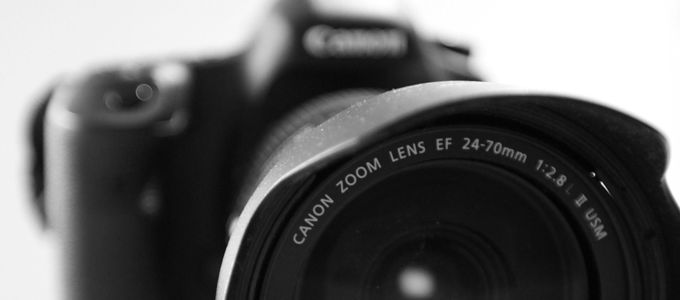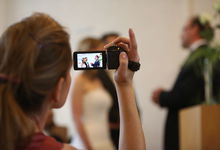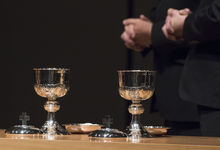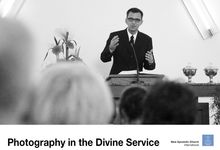Getting the picture (4): The means to an end
It takes more than a few good pots to make an excellent chef. However, the right tools are certainly useful in any creative trade. And what does a photographer need for his art?

Anyone who watches experienced photographers in a divine service will notice that they hardly ever use flash devices. One of its drawbacks is obviously the glaring hello-here-I-am effect. To compensate for this, professional photographers usually use large cameras with quite large lenses. And for a good reason: to capture as much light as possible.
A question of size
Sure, a smartphone does take good snapshots. But if there is not enough natural light, the results are fairly bad. Because it is not the number of megapixels that are important, but the size of the sensor that captures and stores the image. Sometimes pictures are crowded onto a sensor half the size of your fingernail.
Some point-and-shoot cameras and especially so-called bridge cameras no longer have any problems with zooming in. However, since these cameras are generally not very light sensitive, the images can be noisy or blurry.
The perfect lens for every occasion: that’s what single-lens reflex (SLR) cameras or non-reflecting system cameras offer. Their lenses can be changed so that you are always close to your subject. After all, who wants to place themselves right in front of the officiant to take a close-up?
Clearing up the mystery about lenses
Zoom lenses, that range from very far to very close, are always only a compromise. Interchangeable lenses offer a much better quality. But not every type will actually be needed in the Church context, Oliver Rütten says in his book Photography in Divine Service, as he looks back over twenty years of photography. Essential are
- a normal lens: they are the go-to for the majority of all photos in reportage photography. It is suitable for landscape, overview, as well as detail photography and portraits.
- a wide-angle lens: this lens is not only useful for outdoor shots of church buildings, but is often also essential for inside shots of the church hall, which will otherwise hardly fit into the picture in its entirety.
- a telephoto lens: this lens system is useful for taking pictures over long distances and is therefore necessary for taking pictures in large halls or big church buildings.
Additional lenses such as fish-eye, tilt and shift, or macro lenses are for very specific purposes and are more of a stylistic device in the hands of an experienced photographer. Either way, the aim here too is to capture as much light as possible. Light sensitivity is indicated by the single-digit decimal point (usually with the prefix “1:”)—the lower, the better.
Your gear: more than accessories
A trolley or a backpack is ideal to take your camera equipment to the divine service. But once you are at the location a shoulder bag or a special camera waist bag is definitely the best choice.
This is the bag in which your accessories should go: a spare battery for your camera (fully charged of course), additional memory cards (freshly formatted and ready to go), and microfiber cloths for cleaning the lenses.
Experience has taught Oliver Rütten to be prepared. He has a few more tricks in his bag: an umbrella for the next rain shower and a bottle of soap bubble solution for the extra touch at weddings or baptisms.
Photo: Oliver Rütten
Article info
Author:
Date:
Keywords:
Andreas Rother
03.04.2019
Media,
Divine service,
Congregational life







